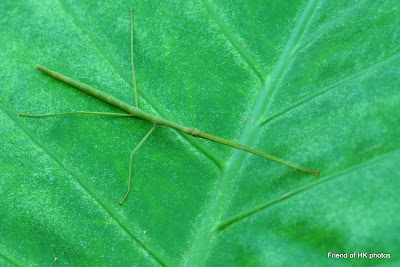In addition to the butterflies, the bugs in Hong Kong are pretty too.
While most of the Stink Bugs are dull in other parts of the world, many of them are quite colourful here.
Although Stink Bugs feed mainly on crops and fruit, sometimes they enjoy a feast of insects too. This Red Stink Bug even managed to catch a big moth.
The variety of Beetle species are even more fascinating to me.
Blister Beetle
To be identified
Soft-winged Flower Beetle
This strange looking beetle is one of the Weevils (Snout Beetle) which is famous for their long snout.
They are often overlooked because of their small size (about 8mm long). The long snout is in fact a big mouth for sucking on fruit and other plants.
The Gold Dust Weevil, however, is much bigger than usual (10-15mm long) and more colourful too.
The giant Stick Insects are sometimes mistaken for small tree branches,
even part of a leaf.
I also find the colour of this Grasshopper refreshing.
More Images at Google+























































